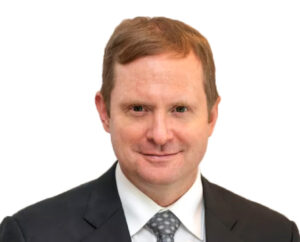Case details
Defense: Injury impossible during particular plastic surgery
SUMMARY
$0
Amount
Verdict-Defendant
Result type
Not present
Ruling
KEYWORDS
anosmia, brain, brain injury, brain tissue, cerebrospinal fluid leak, cribriform plate, dura, emotional distress, fracture, mental, nasal cavity, psychological, sensory, speech
FACTS
On May 2, 2014, plaintiff Lemont Baybrook, 47, a high school special education teacher, underwent a septorhinoplasty by Dr. Arian Mowlavi, a plastic surgeon at Fountain Valley Regional Hospital & Medical Center, in Fountain Valley. Once the splint and dressings were removed post-operatively, Baybrook began dripping cerebrospinal fluid from his right nostril on a continuous basis for about a month. As a result, he presented to the University of California, Irvine Medical Center, in Irvine, on June 19, 2014, and again the next day. At that time, it was determined that Baybrook had a fracture and/or puncture in the nasal cavity of the right cribriform plate and dura, and that a small piece of brain tissue had passed through the defect. The condition was ultimately repaired by removing the piece of brain tissue. Baybrook sued Mowlavi, alleging that Mowlavi failed to properly perform the septorhinoplasty and that this failure constituted medical malpractice. Baybrook claimed that Mowlavi negligently drove the osteotome — an instrument used for cutting or preparing bone — through his cribriform plate and dura during the subject surgery. The plaintiff’s medical experts opined that Baybrook was most likely injured due to the osteotome penetrating the cribriform plate and that this action was below the accepted standard of care. Defense counsel agreed that it would be negligent, or below the standard of care, for Mowlavi to have driven the osteotome through the cribriform plate and dura during the procedure. However, defense counsel denied that this occurred during the procedure or that it was even possible for the complication to occur in that fashion. Counsel contended that it was mechanically not possible for the injury to have occurred the way Baybrook alleged, as other structures were in the path and would have also been injured by the osteotome. The defense’s medical experts opined that it was highly unlikely that Baybrook’s injury occurred as expressed by the plaintiff’s experts., On July 1, 2014, the piece of brain tissue that had passed through the defect in the nasal cavity of the right cribriform plate and dura was removed. However, Baybrook claimed that he now feels different and suffers from a permanent loss of taste and smell (anosmia). He also claimed that he suffers from emotional distress as a result of the surgery.
COURT
Superior Court of Orange County, Santa Ana, CA
Similar Cases
Negligent tire repair caused serious rollover crash: family
AMOUNT:
$375,000
CASE RESULT:
Plaintiff won
CATEGORY:
Personal Injury
Steep, winding road caused multiple truck crashes: plaintiffs
AMOUNT:
$32,500,000
CASE RESULT:
Plaintiff won
CATEGORY:
Personal Injury
Dangerous highway caused fatal multiple vehicle crash: suit
AMOUNT:
$18,681,052
CASE RESULT:
Plaintiff won
CATEGORY:
Personal Injury
Applicant claimed future care needed after fall from roof
AMOUNT:
$3,500,000
CASE RESULT:
Plaintiff won
CATEGORY:
Personal Injury
Roofer claimed he needs future care after fall from roof
AMOUNT:
$6,000,000
CASE RESULT:
Plaintiff won
INJURIES:
- anxiety
- brain
- brain damage
- brain injury
- cognition
- depression
- epidural
- extradural hematoma
- face
- facial bone
- fracture
- head
- headaches
- hearing
- impairment
- insomnia
- loss of
- mental
- nose
- psychological
- scapula
- sensory
- shoulder
- skull
- speech
- subdural hematoma
- tinnitus
- traumatic brain injury
- vision
- Show More
- Show Less
CATEGORY:
Personal Injury
Plaintiff: Improperly trained delivery personnel caused injuries
AMOUNT:
$4,875,000
CASE RESULT:
Plaintiff won
CATEGORY:
Personal Injury




